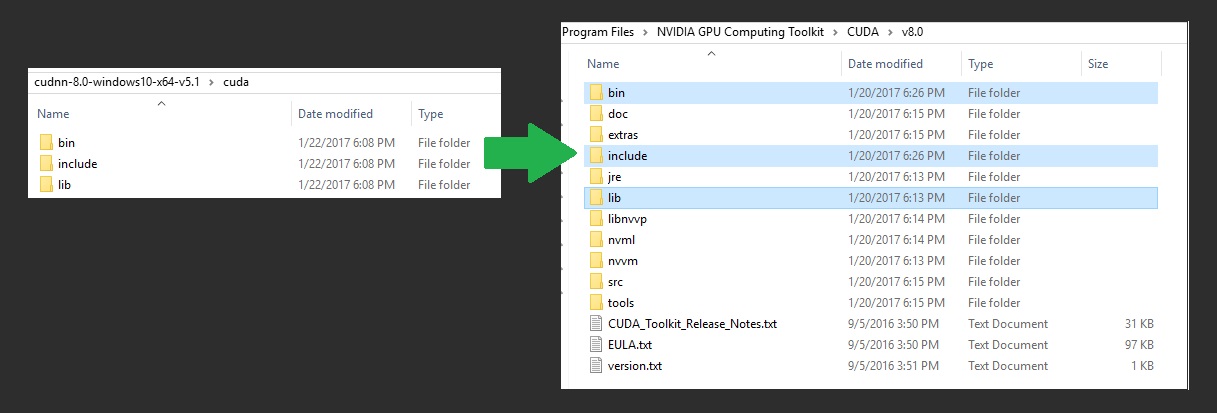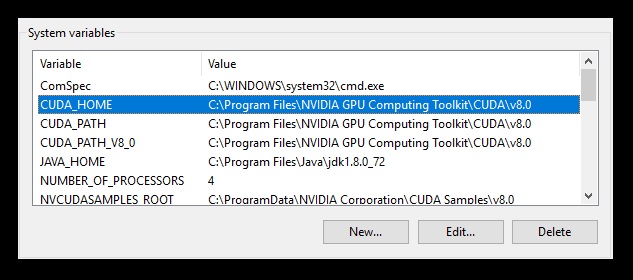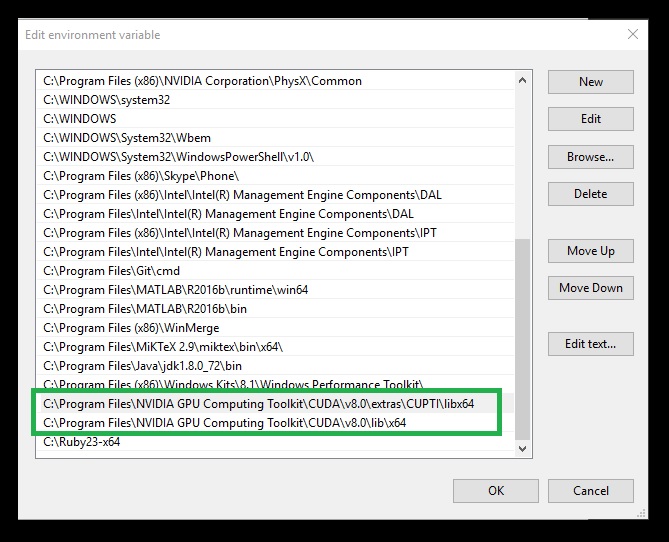Install TensorFlow with GPU for Windows 10
by Nitish S. Mutha
On November 9, 2015 Google open sourced a software library called TensorFlow. TensorFlow is a software library used for Machine learning and Deep learning for numerical computation using data flow graphs. It can run on multiple CPUs and GPUs.
Since deep learning algorithms runs on huge data sets, it is extremely beneficial to run these algorithms on CUDA enabled Nvidia GPUs to achieve faster execution.
When I wanted to install TensorFlow GPU version on my machine, I browsed through internet and tensorflow.org for steps to download and setup. I could not find any good and clear source for setting up TensorFLow on local machine with GPU support for Windows. Most of the information available online was for Linux or Mac OS. Most search results online said there is no support for TensorFlow with GPU on Windows yet and few suggested to use virtual machines on Windows but again the would not utilize GPU.
Then I decided to explore myself and see if that is still the case or has Google recently released support for TensorFlow with GPU on Windows. After refering few pages on tensorflow.org I was able to setup TensorFlow GPU version on my Windows machine with ease. So now it is possible to have TensorFlow running on Windows with GPU support.
Requirements
- Python 3.5
- Nvidia CUDA GPU. You can check here if your GPU is CUDA compatible.
Setting up your Nvidia GPU
You need to install Cuda Toolkit 8.0 and cuDNN v5.1 as the GPU version works best with these.
Download and install CUDA Toolkit
Toolkit version 8.0 or above: https://developer.nvidia.com/cuda-downloads
Example installation directory: C:\Program Files\NVIDIA GPU Computing Toolkit\CUDA\v8.0
Download and install cuDNN
cuDNN version 5.1 library for Windows 10: https://developer.nvidia.com/cudnn
You would need to signup at Nvidia in order to download these files.
Now extract the cuDNN files into your Toolkit directory.
Environmental variables
Ensure after installing CUDA toolkit, the CUDA_HOME is set in the environmental variables. If not then you need to add it manually..
And path variables as..
Install Anaconda
We will install Anaconda as it helps us to easily manage separate environments for specific distributions of Python, without disturbing the version of python installed on your system.
Download and install
Anaconda
Create conda environment
Create new environment, with the name tensorflow-gpu and python version 3.5.2
conda create -n tensorflow-gpu python=3.5.2
Activate the environment
activate tensorflow-gpu
Install tensorFlow
pip install tensorflow-gpu
Done. You have successfully installed TensorFlow with GPU on your Windows machine.
Now lets test if it is using GPU…
Activate environment we created
activate tensorflow-gpu
Test GPU
Enter into python shell
python
import tensorflow as tf
Now run this command and check if it identifies your GPU.
sess = tf.Session(config=tf.ConfigProto(log_device_placement=True))
That’s all. Time to play with it.
Subscribe via RSS



